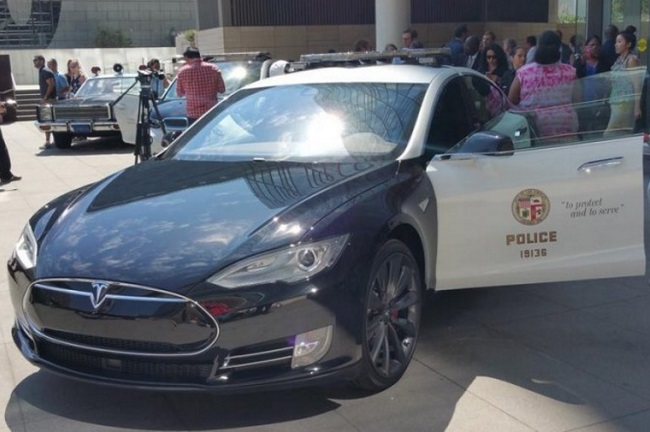
The LAPD’s technicians are working closely with Tesla to outfit a Model S with radios, a computer, a custody cage, and a locking shotgun rack, among other features. When it’s ready, it will be tested by officers in real-world conditions. That means it will provide transportation to and from emergencies, and it might even get to participate in a high-speed chase.
L.A.’s police force is no stranger to electric vehicles. It already operates dozens of unmarked BMW i3s but they’re mostly driven to crime scenes or during the course of an investigation, according to NBC Los Angeles. That’s because they don’t offer enough range for patrol duty, and they’re too slow to participate in high-speed chases. The Model S — one of two examples loaned to the LAPD by Tesla earlier this year — fits the bill because it’s blisteringly fast and it boasts a generous amount of range.
The LAPD points out it’s testing the Model S to gather information about long-range electric cars, and that it realistically will never operate a fleet of them due to the sedan’s high price tag. The average patrol car costs about $47,500 once it’s been painted and fitted with crime-fighting equipment. In comparison, the cheapest Model S available new today is the 60D, which offers 218 miles of range and costs $66,000 before incentives are factored in.
That’s too bad for Tesla, because the City of Angels’ police force spends about $30 million annually to acquire between 600 and 750 new vehicles. The good news is that the smaller Model 3 is on sale now with a more reasonable base price of $35,000.
Editors' Recommendations
- Tesla to begin production on new, more affordable models
- New Model 3 ‘takes out the baby fat,’ Tesla designer says in new video
- Why some Teslas are losing tax credits, and which cars still qualify
- How to watch Tesla’s Cybertruck delivery event if you missed it
- Tesla Model Y vs. Nissan Ariya: Can Tesla take out Nissan’s electric crossover?




